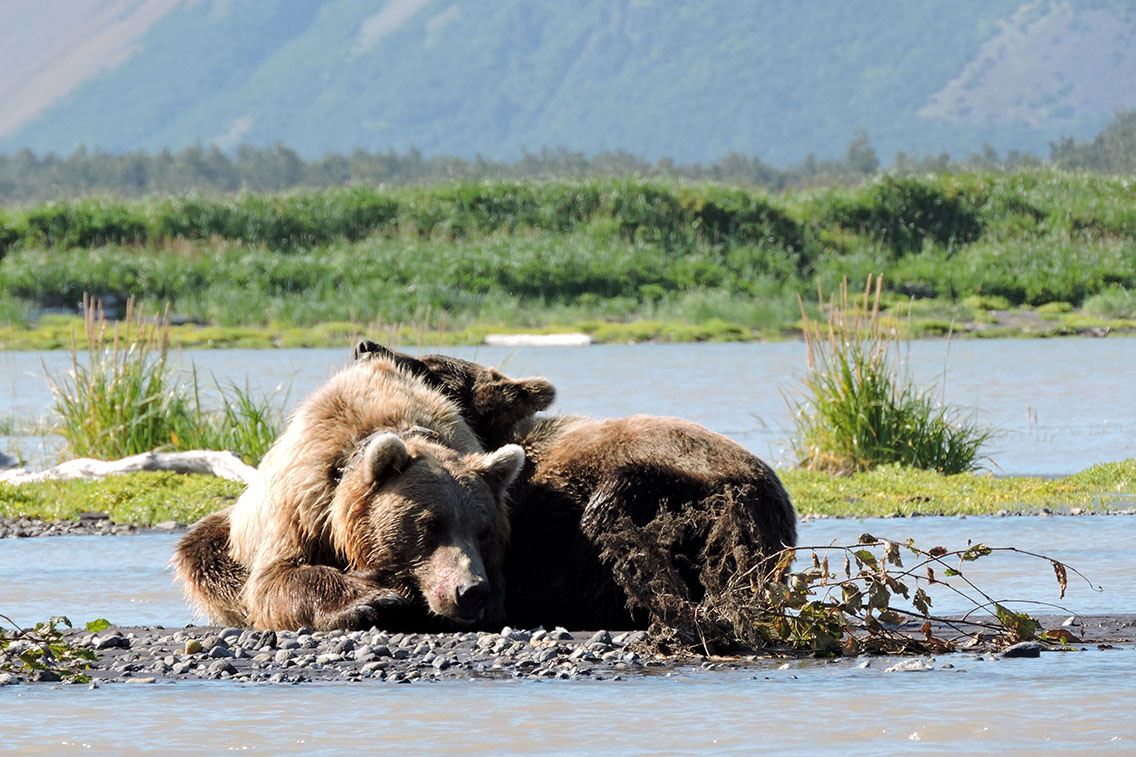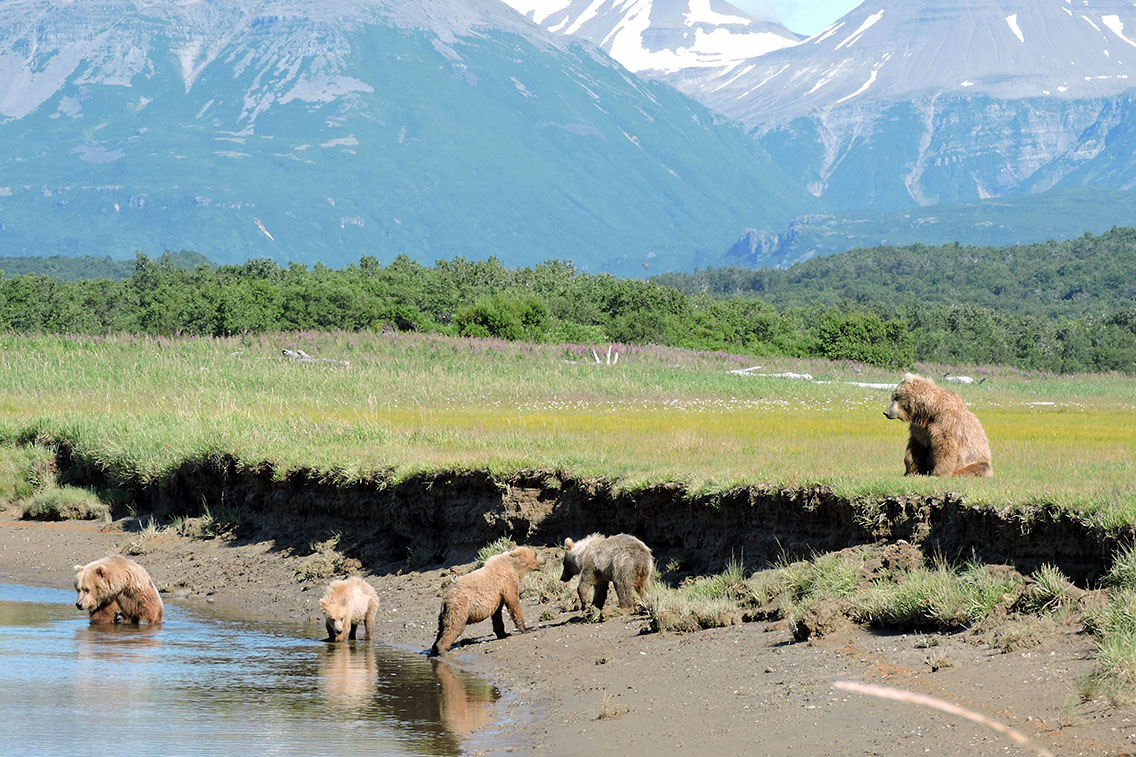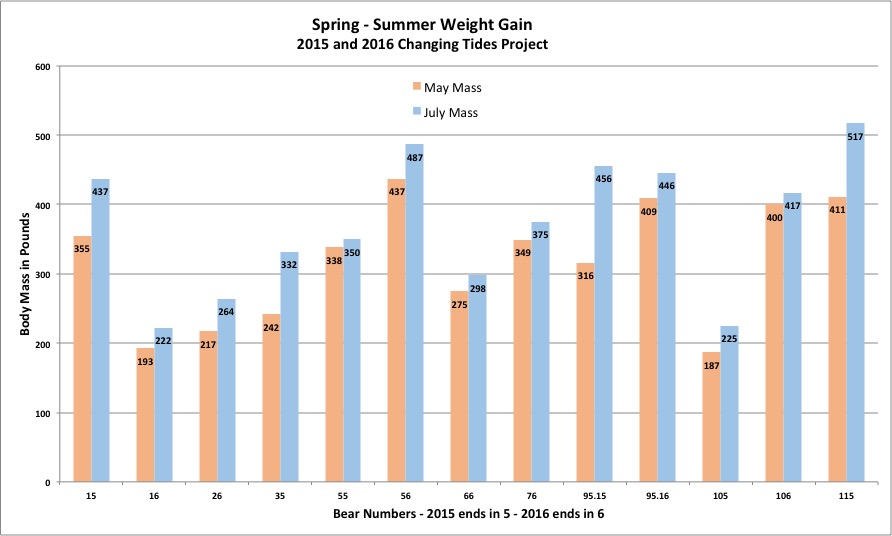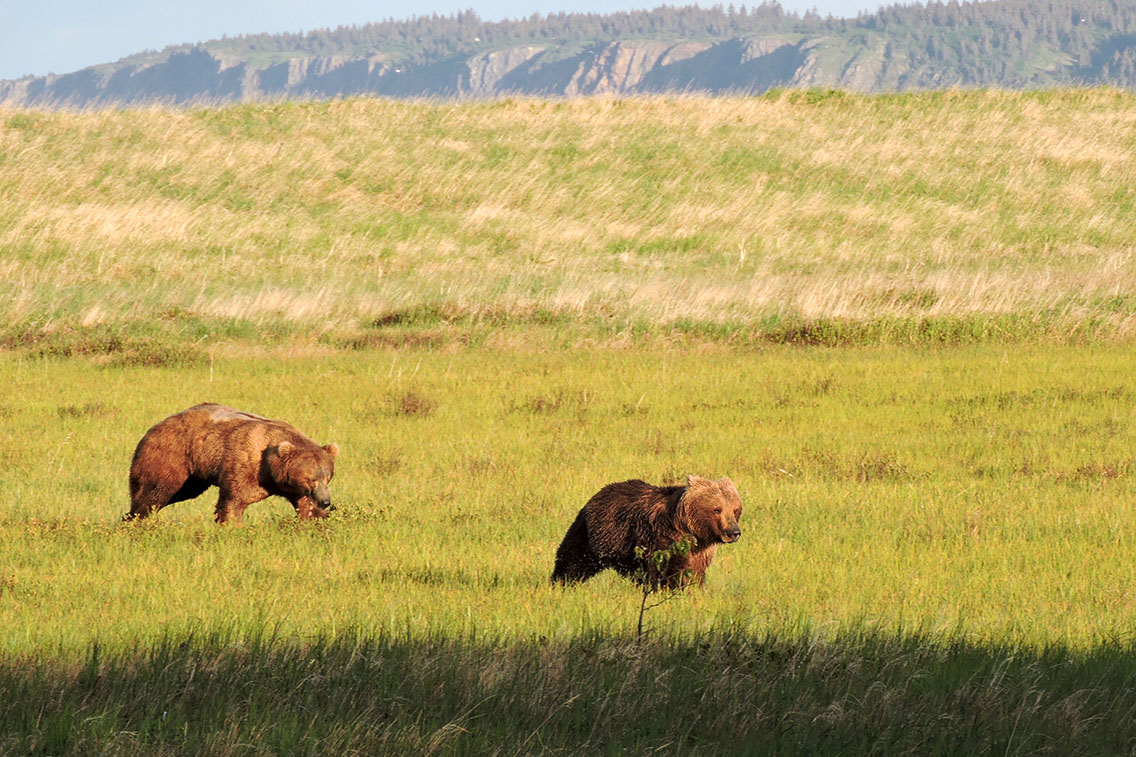The researchers for The Changing Tides project have been collecting hair and blood samples from female bears along Katmai’s coast. Ten collars were dispersed in May of this year on sows and seven of them were recaptured in July. Out of the three that weren’t recaptured, one of the sows was in a spot that was inaccessible to the researchers. Another sow’s collar was unable to be heard properly to be located. The researchers are careful not to capture sows with spring cubs, also known as cubs of the year. However, sows with older cubs are used in this study. Why this selection of females over males?

What makes female bears more accessible or important to use for research than males? Bear 095 naps with her two-year-old cub in Hallo Bay. Photo/J. Erlenbach
Females are often watched in wildlife populations to determine health. Initial cub nourishment, protection, and teaching are the mother bear’s responsibility. Although fall food resources have been shown to influence bear populations, the quality of the early foraging season may have an effect on development of cubs. During the first, year cubs double their weight every two months. They depend exclusively on mom for nourishment for up to six months. This puts a lot of stress on the sow that must re-nourish herself and her cubs after hibernation.

The nearshore environment of Katmai’s coast can provide nutritious resources that can help replace body mass for brown bears lost during hibernation. Healthy moms equal healthy and playful cubs. Photo/J. Erlenbach
The coastal areas in Katmai provide an important high quality early-season habitat for bears. The coast is one of the first places that becomes snow-free after winter. Looking at the data from early summer, both this year and last, we can see how important these resources can be for bears along the coast. The sows that were studied gained between 12-140 pounds over two months. Together they averaged about 1.2 pounds a day and only 0.08 pounds of fat a day. During this early summer period the bears are working to gain more muscle than fat. The late summer season is when researchers begin to see more fat gain per day. Right now, the bigger you get, the more weight and energy you spend to carry that weight around.

While sows are watched for health of the bear populations, why researchers pick females may be a little simpler than that. Throughout the summer as the bears continue to grow, the GPS collars are carefully placed so they won’t infringe on the bears movement or growth. Quite often when a bear wakes up and doesn’t like the collar, they slide it off within the first two hours. Usually the bears that do that are the males. Temperament may be a strong part of why researchers pick females over males.
Plus, male’s necks grow bigger than their heads.

Researchers don’t pick males for a study like this, as females may be a better indicator for species health. Sometimes, the sows don’t pick the boars either. Photo/J. Erlenbach
